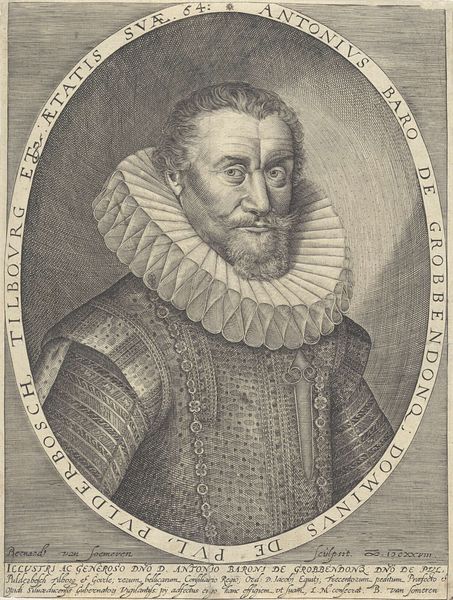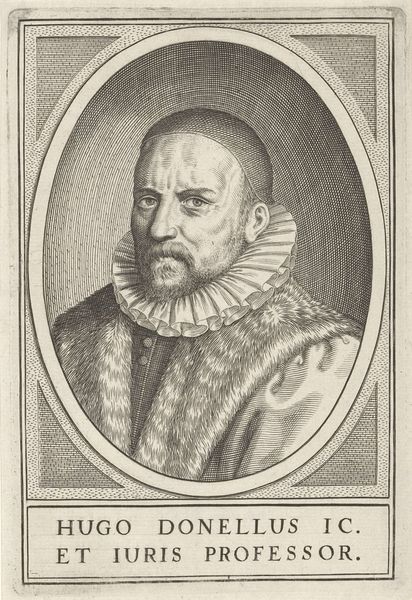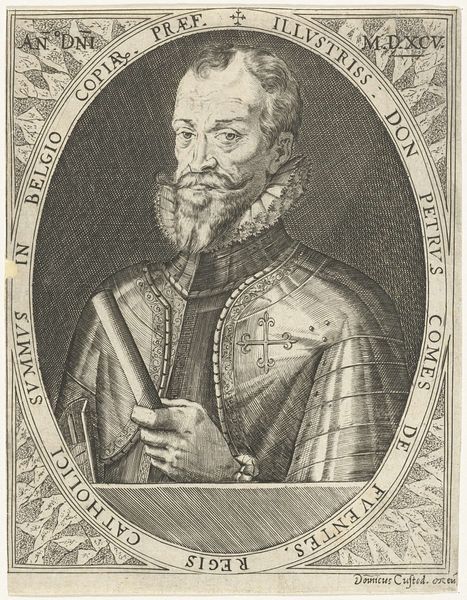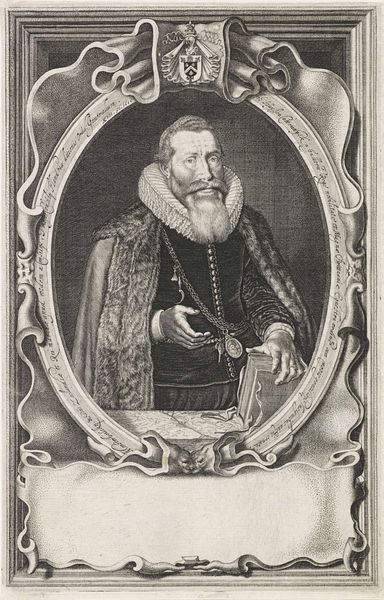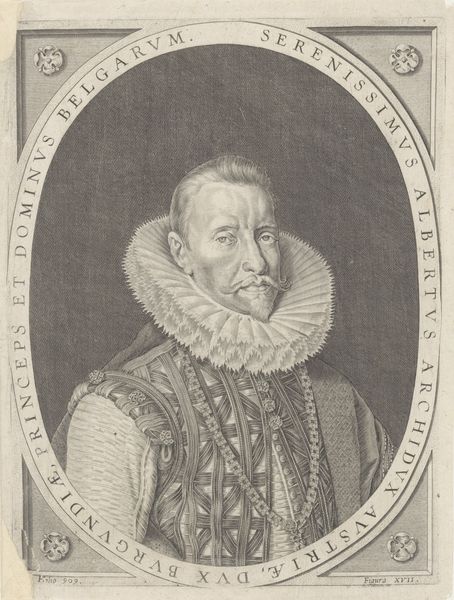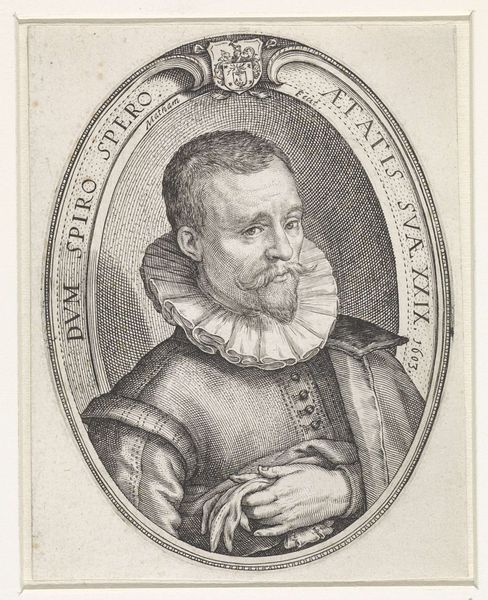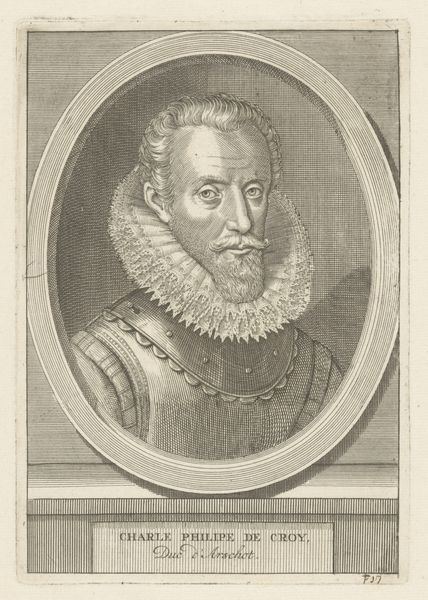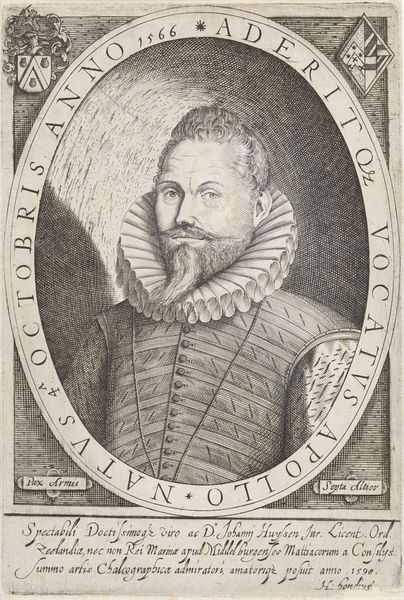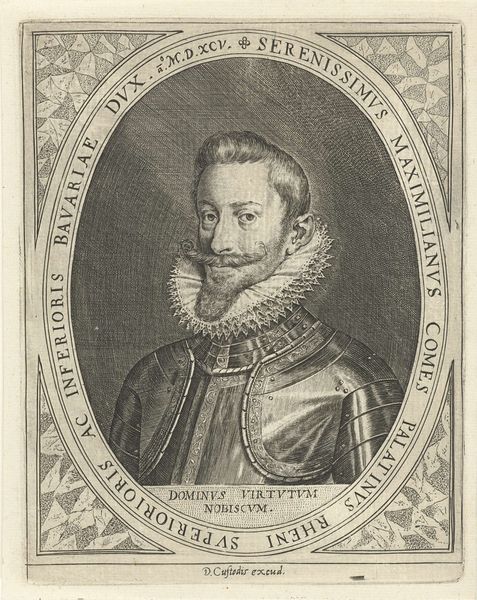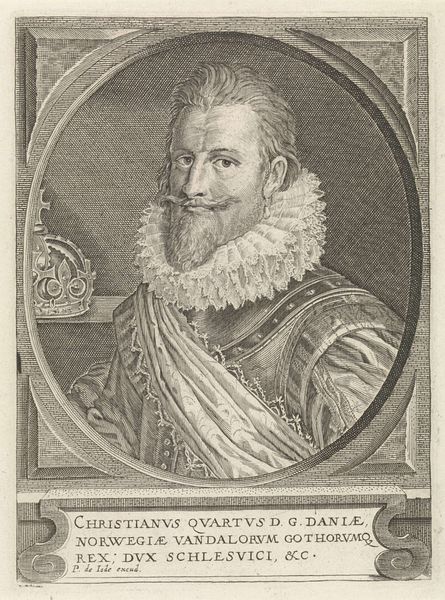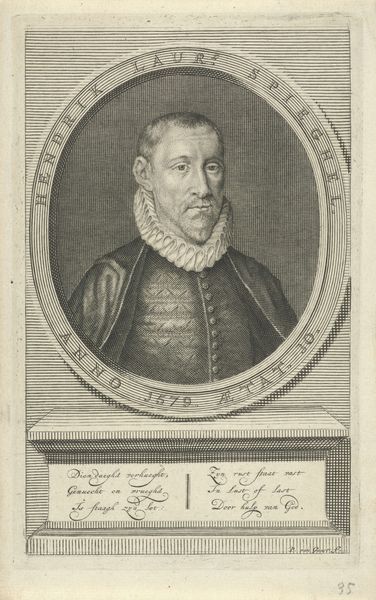
engraving
#
portrait
#
baroque
#
old engraving style
#
historical photography
#
portrait reference
#
19th century
#
line
#
history-painting
#
engraving
Dimensions: height 259 mm, width 187 mm
Copyright: Rijks Museum: Open Domain
Gérard Edelinck created this print of Maximilien de Béthune. Here, the Duke's armour is not merely functional; it symbolizes power and status, reflecting a martial tradition that stretches back to antiquity. Consider the recurring motif of the armour. One can see the echoes of classical heroes, their bodies encased in metal, in statues and engravings across different times and places. This protective shell, however, also represents a psychological barrier, a defense against vulnerability. In earlier Renaissance portraits, armour might signify chivalry and divine protection, yet by the 17th century, it conveys a more secular authority, tied to worldly power. The image taps into a deep, collective memory of leadership and protection. The armour evokes intense psychological states, a visual representation of the burdens and responsibilities of command. Thus, the symbol of armour resurfaces, evolves, and takes on new meanings, reflecting the changing currents of history.
Comments
No comments
Be the first to comment and join the conversation on the ultimate creative platform.

